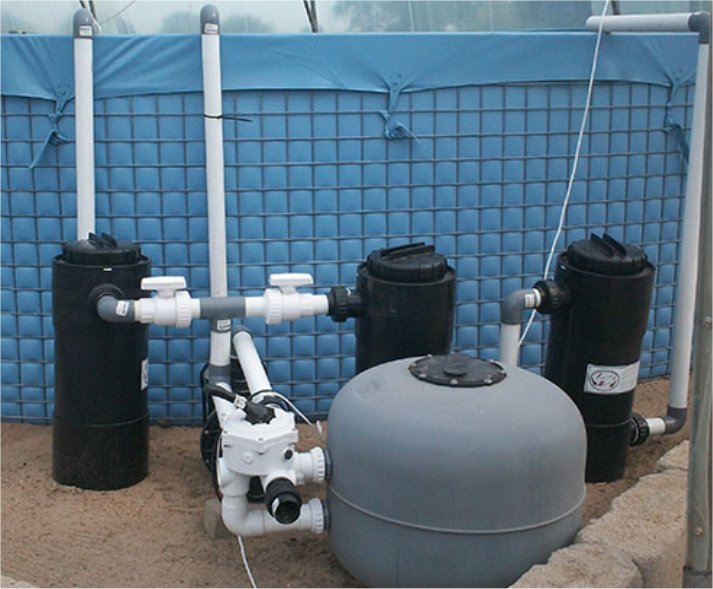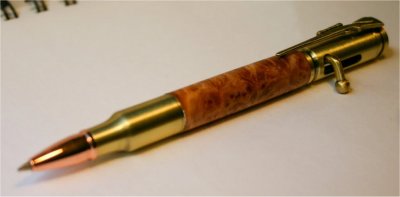Continued…
What is a filter?
Simply speaking, a filter basically removes koi pee and fish poop from the water. There are beneficial germs that reduce the fish pee* to harmless compounds. And then there is some sort of media or material that catches the poop and holds it out of the pond where the beneficial germs can break down the poop just like they break down the pee, only slower.
*fish don’t “pee” urine, it leaks out of their gills into the water.
Essentially, the filter is a life support system for beneficial germs that digest and utilize fish wastes.
There are essentially two basic filters commonly in use on ponds these days, ecosystem ponds, and tubes and wires.
Ecosystem ponds basically pump water to the top of the waterfall where the fish poop is skimmed out in the water returns to the pond through the waterfall and starts the cycle over again. They are dependent upon a layer of gravel on the bottom of the pond to catch and hold other forms of fish waste. That gravel on the bottom of the pond also holds a gigantic biotope of germs and organisms that break down fish poop and fish pee. It’s biologically natural, and extremely easy to maintain these ecosystem ponds. They are on the low end as far as technology, and they require a “teardown clean out“ every year or two.
“Ecosystem ponds require a “teardown clean out” every year or two.”
Now, don’t hold me to that, because if the pond is not stocked heavily, you may get away with two or three years between clean outs. But if the fish start to get sick in the third or fourth year, you need to get someone to give you a “clean out“

“Tubes and wires“ refers to filtration like settlement chambers and bed filters, matting filters, Bukakki showers, every kind of fancy system that you can push water through. Nothing is left in the pond, everything from solid to chemical waste is processed outside the pond in these filtration systems. They have pressure gauges, lots of tubing, valves and gauges.
It is beyond the scope of this article to discuss all of the intricacies of the “dragster“ filtration systems. I like them quite a bit, but there is a learning curve. I am a big fan of the modern bead filters.
You will do yourself a gigantic favor if you engineer a “overflow water change system“ and that is simply running a 1/8 inch line to the pond with a trickle of water through an “in meter”commonly found cheaply in “irrigation systems“. You need to be able to dispose of 12 to 24 gallons of overflow every day, unless you put your irrigation system on a timer.
The advantages of constantly replacing a small percent of water all the time are numerous, but the total avoidance of “pollution“ as well as the attractiveness of the water, the health of the fish, and the simplicity of not having to drain the pond halfway and then refilling it, are all blessings of constant water replacement.
More Koi
If you have inherited a pond, or are a new pond owner I can tell you that you may be excited at first about getting new fish but what you might notice is that whenever you get a new fish, everybody gets sick. That’s because fish coming out of the pond trade quite often have different diseases from germs to parasites which naturally occur on fish that have been shipped from place to place and are under that level of stress.
The way to avoid all of these introduced problems is to avoid buying or getting new fish from any source including your neighbors pond. Just because her fish look healthy, does not mean that they are and they may bring your collection of fish, a disease if you take some. So be careful.
If you would like to get more fish, simply put together a quarantine system which sounds fancy but it’s not. If you think you want to get 10 inches of new fish, set up 100 gallon facility. If you want to get 100 inches of new fish, set up 1000 gallon facility which really isn’t that large. You can make such a thing out of a log cabin design of landscaping timbers lined with plywood and liner
If you decide to set up a quarantine facility for your new fish, you will need beneficial germs and a “filter“ for that. You can take donations of beneficial germs from the main pond filter or gravel, all of that “dirty“ brownish green “stuff“ you can squeeze out of the filter or gravel can quickly colonize a brand new filter in a quarantine system, often within 48 hours. Then, go get your new fish.
Make sure the new quarantine has adequate filtration, is sufficiently circulated and has enough room plus some places for fish to hide, sometimes that’s as easy as floating a piece of Styrofoam on the water surface for the fish to hide under.
While the new fish are reclining in the new holding system prior to being introduced to your main pond, simply treat them with salt according to the instructions found on Drjohnson.com, and use something for fluke parasites which may not respond to the salt. A dandy combination of medications to use would be Salt and Praziquantel.
Something else worthy of your attention might be to deploy one or two rounds of Tetra “Lifeguard” which is a bacterial disinfectant for fish and water. One or two rounds of that at the end of your quarantine after the salt has been reduced may provide the final “cleanup” that you need before putting the new fish into your pond.





